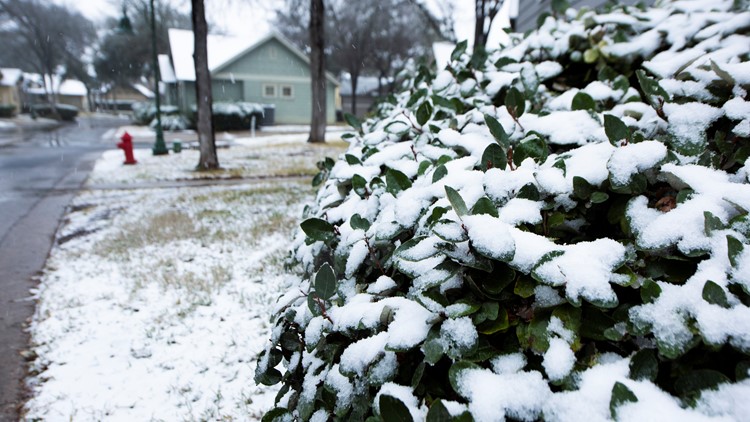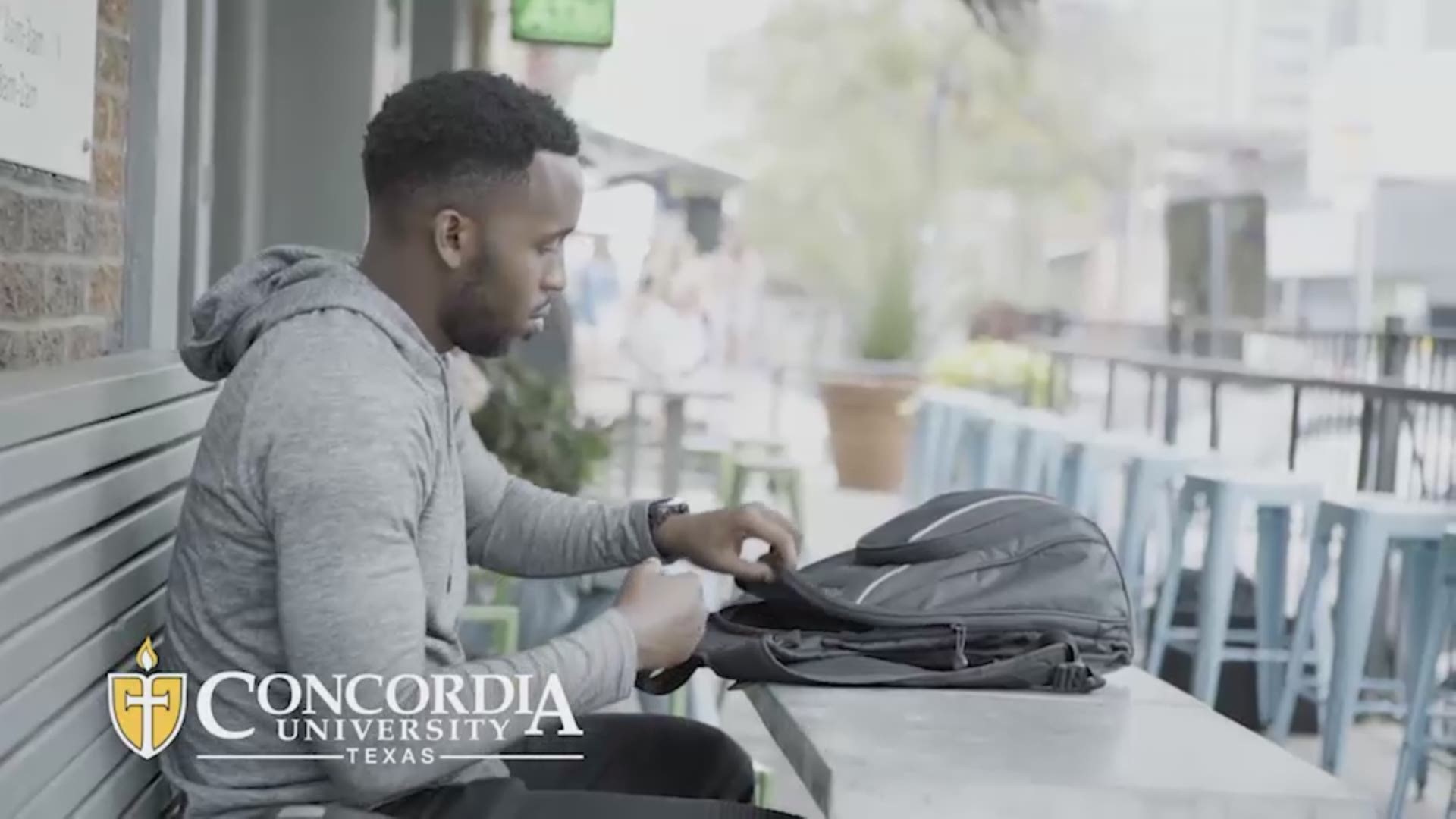AUSTIN, Texas — It's always wise to be prepared for freezing temperatures and extreme weather events.
A Winter Storm Warning has been issued for a majority of Central Texas until noon Wednesday. We're expecting a big drop in temperatures and the chance for some freezing rain and icing issues.
In the event of winter weather, this guide can help.
This article can show you what you need to know to protect your pipes and faucets from bursting amid subfreezing temperatures, plus the key supplies you always need to have on hand.
Austin Energy encourages its customers to be prepared for power outages by signing up for its text Outage Alerts and checking its mobile-friendly outage map at outagemap.austinenergy.com. Customers can also report outages at 512-322-9100.
Here's how you can keep your cellphone charged even if power goes out and how to conserve your battery now.
Austin Energy has provided these other tips for customers to be prepared and stay safe during winter weather:
- Keep cellphones charged and backup chargers fully charged
- Use power strips to help protect electronic devices in case of a power outage. Consider using external power sources for your electronics.
- Assemble a storm preparation kit with flashlights, fresh batteries, snacks, water and other necessities. Make sure everyone in your home knows where to find it
- Keep your refrigerator and freezer doors closed, if possible. Food will stay good up to four hours
- Do not drive over or go near a downed power line, it could be energized. Call 3-1-1 if you see a downed line to report it. If the line is sparking, call 9-1-1
- If you see limbs on wires or see downed tree limbs, please call 3-1-1 to report them.
Customers can also follow these tips to save energy during cold weather:
- Set your thermostat at 68 degrees or lower in the winter. Wear warm, comfortable clothing to help stay warm indoors instead of adjusting the thermostat
- Keep doors and windows closed to minimize hot air from escaping the home
- If you have a fireplace, use it to help heat your home instead of turning up the thermostat. When not in use, make sure your fireplace damper is closed to prevent heat from escaping up the chimney
- Switch the setting on ceiling fans to run clockwise at a low speed. This gentle updraft helps push warm air near the ceiling down into your living space
- Save energy in the kitchen. Give your oven and wallet a break by using the oven light to check on the food instead of opening the door. Use a slow cooker or microwave instead of the oven. Do not use the oven to heat your home
Did you know you can still flush a toilet during a water outage? As long as you have snow, you should have no problems. Check out these toilet tips.
If a boil water notice is issued, here's how to make sure your water is bacteria free.
A kit should include enough supplies for everyone in your house for seven days. Understand the unique needs of you and your family and take those into account when building your kit. Don’t forget your pet's needs.
Kit checklist:
- Basic first aid kit, seven-day supply of medications/medical items
- Map of the area
- Extra cash (suggested: $200 in small bills)
- Spare change of clothes
- Spare car/home key
- Family and emergency contact info (phone and email)
- Pet supplies (collar, leash, tags, food, bowl)
- Copies of personal documents in water-light bag
- 1 gallon of water per person, per day (seven-day supply)
- Seven-day supply of non-perishable food, can opener
- Battery-powered or hand-crank radio (NOAA Weather Radio, if possible)
- Cellphone, chargers, flashlight, extra batteries
- Sanitation, personal hygiene items, blankets
- Wrench or plyer
- Other tools or equipment you may need
Using a generator to power your home? Keep these tips in mind:
- Never use a generator inside your home or garage, even if doors and windows are open
- Only use generators outside, more than 20 feet away from your home, doors and windows
- Install battery-operated or battery back-up CO detectors near every sleeping area in your home
- Check CO detectors regularly to be sure they are functioning properly
No doubt about it: It takes some special skills to power your vehicle across roads that have patches of ice.
The safety experts at AAA have a few reminders if you must get out on Central Texas and Hill Country roads during a winter weather event.
Before you take off, use a ice scraper to remove snow and ice from your windshield and all windows, including side and rear windows.
Once you’re on your way, reduce your speed and leave plenty of room to stop. You should allow at least three times more space than usual between you and the vehicle in front of you.
Brake gently to avoid skidding. Never use cruise control on any wet, snow-covered or icy roads. And if you should happen to find yourself in a skid?
“When a vehicle begins to skid, it’s important not to panic and just continue to look and steer in the direction you want the car to go, “ said Daniel Armbruster with AAA-Texas and New Mexico. “Avoid slamming on the brakes. That will just further upset the vehicle’s balance and it makes it harder to control.”
In Central Texas, it's not often that we wake up to find our car doors frozen shut and hoods covered in ice or snow.
Do you know where to check to make sure your car is ready to go? Do you know the key items to pack in a travel survival kit?
Pet owners can take these precautions to keep their animals safe:
- Keep pets indoors during extreme weather conditions. Outdoor time should be limited as much as it can be to prevent possible frostbite
- Consider opening your garage slightly (and leaving a heating pad or heat lamp on) to let cats in from the cold
- Provide shelter with insultation and heat (heating pad or straw, not hay) or any outdoor pets/strays that can't be brought indoors
Staying warm and staying safe: How to minimize the risks of space heaters
Many house fires involve portable space heaters. According to the National Fire Protection Association, many home-heating fire deaths are caused by people having heating equipment too close to things that can burn.
Fire safety experts offer this advice about how to use space heaters safely:
- Keep it at least three feet from anything flammable like drapes or furniture. You should never sit a space heater on a carpet or area rug. Instead, put the space heater on a hard and level surface like wood or tile
- Don't leave it unattended. When you can't pay attention to the space heater, you need to turn the heater off
- Keep space heaters out of reach of children and pets
- Always plug it directly into the outlet. Never use an extension cord or a surge protector
- And regardless of how you heat tour home, make sure to have a working smoke and carbon monoxide alarm
Freezing temperatures can create dangerous conditions that can lead to hypothermia and frostbite. Here's how to identify the two afflictions and how to warm an affected person up.
Stay warm, but stay safe.



